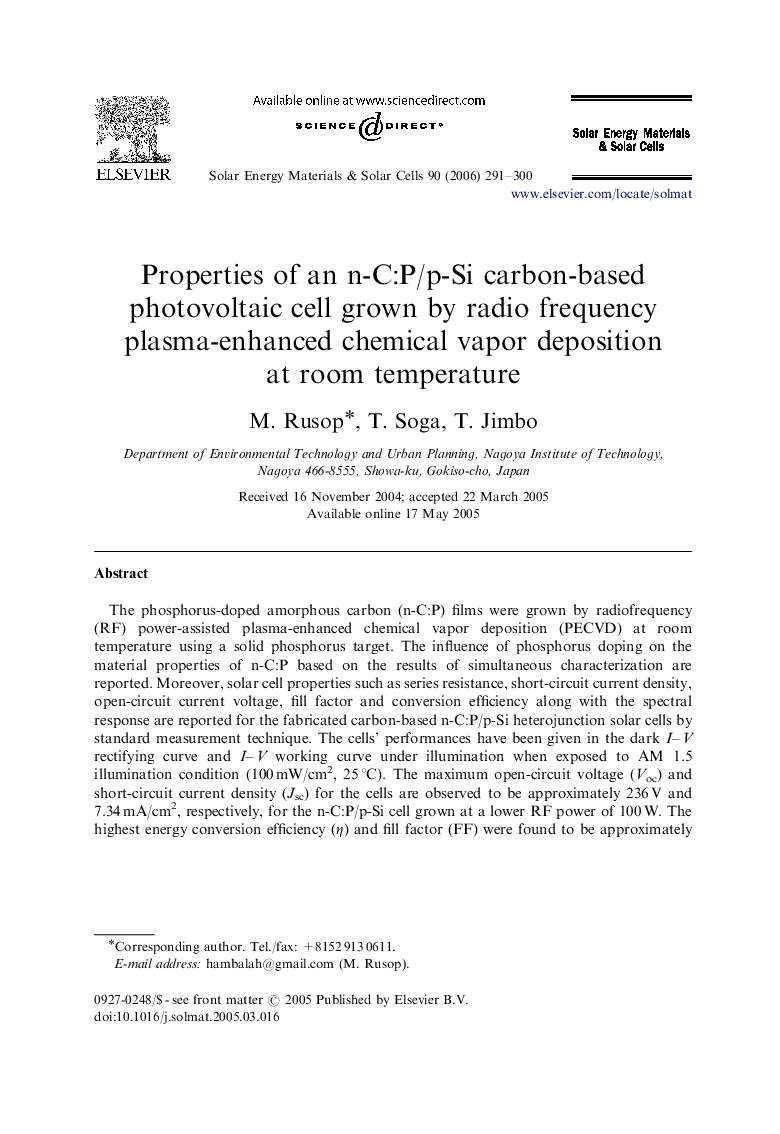| Article ID | Journal | Published Year | Pages | File Type |
|---|---|---|---|---|
| 81317 | Solar Energy Materials and Solar Cells | 2006 | 10 Pages |
The phosphorus-doped amorphous carbon (n-C:P) films were grown by radiofrequency (RF) power-assisted plasma-enhanced chemical vapor deposition (PECVD) at room temperature using a solid phosphorus target. The influence of phosphorus doping on the material properties of n-C:P based on the results of simultaneous characterization are reported. Moreover, solar cell properties such as series resistance, short-circuit current density, open-circuit current voltage, fill factor and conversion efficiency along with the spectral response are reported for the fabricated carbon-based n-C:P/p-Si heterojunction solar cells by standard measurement technique. The cells’ performances have been given in the dark I–V rectifying curve and I–V working curve under illumination when exposed to AM 1.5 illumination condition (100 mW/cm2, 25 °C). The maximum open-circuit voltage (Voc) and short-circuit current density (Jsc) for the cells are observed to be approximately 236 V and 7.34 mA/cm2, respectively, for the n-C:P/p-Si cell grown at a lower RF power of 100 W. The highest energy conversion efficiency (ηη) and fill factor (FF) were found to be approximately 0.84% and 49%, respectively. We have observed that the rectifying nature of the heterojunction structures is due to the nature of n-C:P films.
